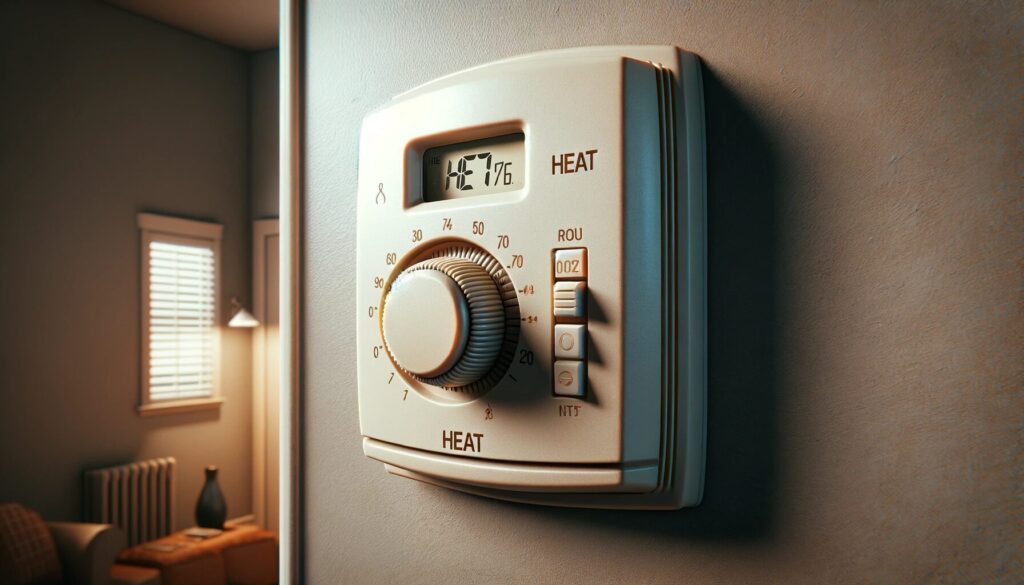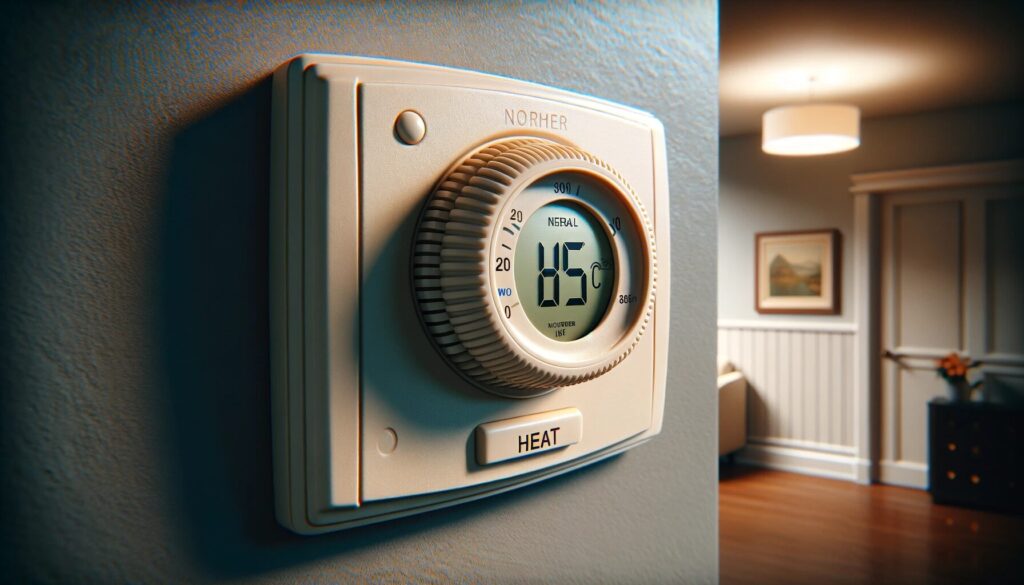Embarking on the journey of thermostat settings, especially focusing on EM Heat, is like laying the foundation for your home’s comfort and efficiency. Understanding these settings isn’t just about keeping the cold at bay, it’s about being the master of your home’s climate control.
EM Heat, or Emergency Heat, plays a pivotal role here. Think of it as your heating system’s understudy, ready to take center stage when the lead actor—the primary heating system—is unable to perform. This feature becomes particularly important in regions where winter doesn’t just knock on your door but rather barges in.

Understanding EM Heat
EM Heat stands as your heating system’s plan B, a crucial component in ensuring warmth when your main system struggles or fails. Let’s break it down:
- What It Is: Simply put, EM Heat is your backup heating source. It’s the relief pitcher that steps in when your primary heat pump can’t handle the external cold or is out for repairs.
- The Role in Heating Systems: In an ideal setup, your heat pump handles the regular heating load. But in scenarios where temperatures plummet, EM Heat is like the reliable neighbor who steps in to help when you’re in a bind.
- EM vs. Standard Heating: Your everyday heating is like a well-oiled machine—efficient and economical. EM Heat, on the other hand, is less efficient and more costly, akin to using a gas guzzler for a quick trip to the store.
When to Use EM Heat
Knowing when to engage EM Heat is akin to understanding when to apply a specific tool for a particular job. Here are the guidelines:
- Necessary Situations:
- When temperatures drop to extremes, making your heat pump about as effective as a chocolate teapot.
- If your heat pump is down for the count, either due to malfunctions or maintenance.
- Advantages in Scenarios:
- EM Heat comes to the rescue in urgent heating needs.
- It’s a preventive measure against issues like frozen pipes in severe cold.
- Avoid Misuse:
- Avoid using EM Heat as a regular heat source, much like you wouldn’t use a chainsaw to trim your hedges.
- Turn it off once your main system is back online or when the weather is more forgiving.

EM Heat on Your Thermostat
Let’s walk through the steps to manage the EM Heat setting on your thermostat, much like following a blueprint for a successful build:
- Locating EM Heat:
- Your thermostat is usually stationed in a common area. Locate the EM Heat setting, often labeled as ‘EM Heat’ or ‘Emergency’.
- Activating EM Heat:
- Switching to EM Heat typically involves toggling a switch or pressing a button.
- In more modern thermostats, you might navigate through a menu to find this option.
- Visual Aids:
- Newer models might display an ‘EM’ indicator on the screen.
- On older models, look for a clearly labeled switch or button.
Maintenance and Safety Tips
When it comes to maintaining your heating system during EM Heat use, think of it as regular upkeep of a well-used tool – essential for longevity and performance. Here’s how:
- Regular Inspections: Like checking the level and plumb of a newly framed wall, regularly inspect your heating system. Listen for unusual noises or look for signs of wear, just as you would inspect a tool for damage before use.
- Keep It Clean: Ensure the area around your heat pump and thermostat remains free of debris. This is akin to keeping your work area clean – it prevents accidents and ensures efficiency.
- Safety Measures: Just as you’d wear safety goggles or ear protection on a job site, make sure your home’s safety devices, like smoke and carbon monoxide detectors, are in working order.
- Professional Help: If you encounter issues beyond your expertise, such as electrical problems, don’t hesitate to call in a professional. It’s like consulting a structural engineer when you uncover unexpected issues during a remodel.
Energy Efficiency and EM Heat
Discussing EM Heat’s impact on energy consumption is similar to balancing a project’s cost-effectiveness with its overall quality.
- Energy Consumption: Be aware that EM Heat can be a significant energy consumer, much like using a high-powered saw for a simple cut.
- Efficient Use: Limit EM Heat to when it’s absolutely necessary – it’s like using power tools only when they are the most effective option, not for every minor task.
- Alternative Solutions: Consider more energy-efficient solutions like smart thermostats or upgrading your insulation, akin to investing in high-quality tools that deliver long-term savings.
Troubleshooting Common Issues
Troubleshooting common issues with EM Heat can be compared to addressing unexpected challenges during a renovation project:
- Thermostat Issues: If your thermostat is unresponsive, it’s like a jammed tool. Try resetting it or replacing the batteries.
- Persistent EM Heat: If EM Heat remains active without need, this could indicate a thermostat problem or an issue with your heat pump, much like diagnosing a recurring electrical fault.
- Professional Assessment: For persistent or complex issues, like strange noises or system failure, calling a professional is akin to bringing in a specialist for a complex aspect of a construction project.
FAQ Section
EM Heat is your heating system’s backup mode, used when the main heat pump struggles or fails – a contingency plan for extreme conditions.
Activate EM Heat in extreme cold, or if your heat pump is malfunctioning – much like how you’d switch techniques or tools when faced with a unique construction challenge.
Regular use of EM Heat can be expensive, similar to the increased costs of using specialized tools or materials for everyday tasks.
If you’re skilled in electrical work, installing a thermostat can be a DIY project. Otherwise, seek professional assistance – comparable to knowing when a project is within your skill set or when it’s time to call an expert.
EM Heat is a less efficient, but more powerful, heating mode than regular heating – similar to the difference between a fine chisel and a jackhammer in terms of precision and power.
